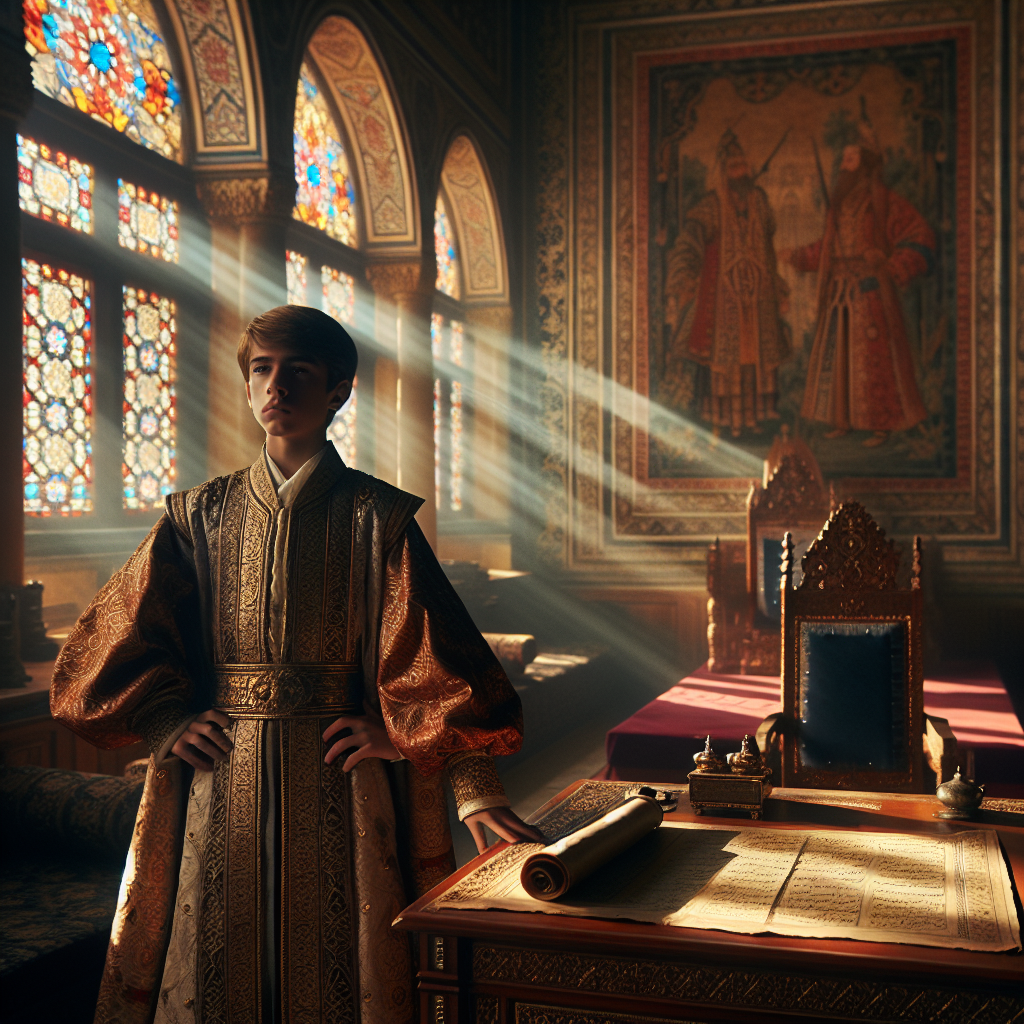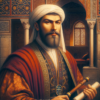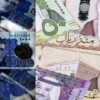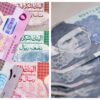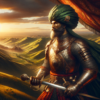
Sultan Mehmed II and the Beautiful Orchestra of Art and Literature
Sultan Mehmed II, often remembered as Mehmed the Conqueror, wasn’t just a powerful ruler who expanded the Ottoman Empire; he was also a visionary who left an indelible mark on the world of art and literature. His reign was a time of great cultural rebirth, where the fusion of East and West created a unique and vibrant cultural landscape. This post explores how Mehmed II’s patronage of art and literature significantly shaped the Ottoman Empire and beyond, leaving a legacy that continues to inspire.
Mehmed II as a Cultural Patron
Mehmed II was more than a military leader; he was a patron of the arts, deeply invested in enriching the cultural heritage of his empire. By providing support and resources to artists, writers, and scholars, Mehmed played a crucial role in creating a flourishing cultural atmosphere. His reign marked a period when art and literature were not only encouraged but also celebrated as vital aspects of society.
Under Mehmed’s rule, the Ottoman Empire became a melting pot of cultural exchange, where ideas from both the Islamic world and Europe coalesced. This blending of influences created a rich tapestry of artistic and literary achievements that set the stage for future generations. Mehmed’s cultural patronage laid the groundwork for a renaissance within the Ottoman Empire, echoing the artistic revival happening concurrently in Europe.
The cultural investments made by Mehmed II were not limited to his lifetime. They set the tone for subsequent rulers, who continued to nurture and expand upon his vision. Mehmed’s dedication to the arts established a tradition of patronage that would help shape the Ottoman Empire’s identity as a center of cultural and intellectual activity.
Shaping the Cultural Landscape of the Ottoman Empire
The reign of Mehmed II was a pivotal moment in history that significantly influenced the cultural trajectory of the Ottoman Empire. Under his leadership, the empire transformed from a regional power into a cultural powerhouse, attracting artists, scholars, and thinkers from across the globe. This period of cultural enrichment helped solidify the Ottoman Empire’s status as a major hub of art and knowledge.
Mehmed’s vision extended beyond mere conquest. He understood the importance of culture in legitimizing his rule and elevating the status of his empire. By investing in art and literature, he aimed to create a lasting legacy that would transcend his military achievements. This focus on culture not only enhanced the empire’s prestige but also fostered a sense of unity among its diverse peoples.
The cultural contributions of Mehmed II had a profound impact on the Ottoman Empire and its successors. His patronage established a tradition of artistic excellence that continued to evolve and adapt over the centuries. By prioritizing culture, Mehmed laid the foundation for a vibrant and dynamic society that celebrated creativity and intellectual pursuits.
Mehmed II as a Renaissance Patron
Mehmed II’s cultural vision was shaped by his exposure to both European and Islamic intellectual currents. He admired the Renaissance art and humanism sweeping across Europe and sought to incorporate these elements into his own court. This admiration led him to engage with European artists and thinkers, fostering a cross-cultural exchange that enriched the Ottoman cultural scene.
Mehmed’s appreciation for Renaissance ideals set him apart from other rulers of his time. He recognized the value of blending different cultural influences to create something new and unique. This approach mirrored the efforts of European Renaissance patrons, such as the Medici family, who similarly supported the arts to enhance their political and cultural influence.
By drawing parallels between himself and his European counterparts, Mehmed positioned the Ottoman Empire as a bridge between East and West. His patronage of the arts was not only an expression of personal taste but also a strategic move to align the empire with the broader cultural trends of the time. This blending of influences helped create a distinctive Ottoman artistic identity that continues to captivate scholars and art lovers alike.
Architectural Contributions
One of Mehmed II’s most enduring legacies is his transformation of Istanbul into a cultural capital through monumental architectural works. By commissioning grand structures that combined Byzantine and Islamic styles, Mehmed sought to create a city that reflected the empire’s diverse heritage and aspirations.
The Topkapi Palace, with its opulent design and strategic location, served as both a symbol of Ottoman grandeur and a testament to Mehmed’s vision. This architectural masterpiece embodied the synthesis of different cultural influences, showcasing the empire’s wealth and power.
Another key structure, the Fatih Mosque, exemplified Mehmed’s commitment to cultural synthesis. By incorporating elements of Byzantine architecture into its design, the mosque became a symbol of the empire’s ability to harmonize diverse traditions. These architectural achievements not only enhanced Istanbul’s status as a cultural center but also reinforced Mehmed’s legacy as a visionary patron of the arts.
Advancements in Visual Arts
Under Mehmed II’s reign, the visual arts experienced a renaissance of their own. The sultan actively encouraged the development of portraiture, a unique contribution to Islamic art at the time. By commissioning works from Italian and Byzantine artists, such as Gentile Bellini, Mehmed facilitated a cross-cultural exchange that enriched the Ottoman artistic landscape.
These collaborations with European artists marked a significant departure from traditional Islamic art, introducing new techniques and styles that would influence future generations. Mehmed’s patronage of portraiture not only celebrated the individual but also showcased the empire’s openness to new ideas and influences.
In addition to portraiture, Mehmed’s reign saw the rise of miniature painting, which blended Persian, Ottoman, and European techniques to create intricate and expressive works of art. This fusion of styles reflected the multicultural nature of the empire and underscored Mehmed’s role as a cultural innovator.
Patronage of Literature and Poetry
Mehmed II’s support for poets, historians, and scholars was instrumental in fostering a vibrant literary culture within the Ottoman Empire. He recognized the power of words to inspire, educate, and unite people, and actively promoted both Persian and Turkish literary traditions.
Prominent poets of the time, such as Ahmed Pasha, flourished under Mehmed’s patronage, creating works that enriched Ottoman literature and contributed to the empire’s cultural legacy. These poets used their art to explore themes of love, power, and identity, capturing the spirit of the age and the complexities of life under Ottoman rule.
Mehmed’s promotion of literature extended beyond poetry, as he encouraged the production of historical and scholarly works that documented the empire’s achievements and aspirations. This flourishing of intellectual and poetic works helped establish the Ottoman Empire as a center of cultural and intellectual activity.
Historiography and Scholarship
Mehmed II’s sponsorship of historians and chroniclers played a crucial role in preserving the history of his reign and the rise of the Ottoman Empire. By supporting scholars like Tursun Beg, who documented Mehmed’s conquests and rule, the sultan ensured that future generations would have access to valuable insights into the empire’s history.
These historical works not only celebrated the achievements of the Ottoman Empire but also provided a framework for understanding its development and evolution. Mehmed’s commitment to historiography and scholarship helped create a legacy of learning that would continue to inform and inspire future generations.
In addition to supporting historians, Mehmed established madrasas and libraries to promote scholarship and preserve knowledge. These institutions served as centers of learning and research, fostering a culture of intellectual curiosity and exploration that would endure long after Mehmed’s reign.
Translation and Preservation of Knowledge
Mehmed II’s dedication to preserving ancient knowledge is evident in his initiative to translate Greek, Latin, and Arabic texts. By introducing classical texts to the Ottoman intellectual elite, Mehmed bridged the gap between Western and Islamic scholarship, fostering a spirit of intellectual exchange and collaboration.
This translation movement played a vital role in preserving the wisdom of the past and making it accessible to scholars and thinkers within the Ottoman Empire. By promoting the study of philosophy, astronomy, and science, Mehmed created an environment that encouraged learning and innovation.
Mehmed’s commitment to preserving and sharing knowledge not only enriched the intellectual life of the empire but also reinforced its position as a center of learning and scholarship. This dedication to education and intellectual growth remains a key aspect of Mehmed’s legacy.
Cultural Diplomacy and Cross-Cultural Exchanges
Mehmed II’s diplomatic relations with European states facilitated cultural and artistic exchanges that enriched the Ottoman Empire. By inviting European artists and scholars to his court, Mehmed fostered a cross-cultural dialogue that blended Ottoman and European artistic traditions.
These exchanges helped create a unique Ottoman artistic identity, characterized by its ability to harmonize diverse influences and create something new and innovative. The impact of these cross-cultural interactions can be seen in the art, architecture, and literature of the time, which reflect a rich tapestry of ideas and inspirations.
Mehmed’s cultural diplomacy not only enhanced the empire’s prestige but also fostered a sense of unity and shared purpose among its diverse peoples. By promoting a spirit of collaboration and exchange, Mehmed helped create a vibrant and dynamic society that celebrated creativity and innovation.
Legacy of Mehmed II’s Cultural Contributions
The cultural legacy of Mehmed II continued to influence subsequent Ottoman rulers, particularly Suleiman the Magnificent, who expanded upon Mehmed’s vision and further enriched the empire’s cultural landscape. Mehmed’s investments in art and literature established Istanbul as a cultural and intellectual hub, attracting talent and ideas from across the globe.
Mehmed’s contributions to Islamic art, literature, and world cultural history cannot be overstated. By fostering a spirit of innovation and collaboration, Mehmed helped create a cultural legacy that transcends time and continues to inspire artists, scholars, and thinkers today.
His lasting impact on the Ottoman Empire and beyond highlights the importance of cultural patronage in shaping societies and fostering a shared sense of identity and purpose. Through his dedication to the arts, Mehmed II not only strengthened his empire but also enriched the cultural heritage of the world.
Conclusion
Sultan Mehmed II’s reign was a period of remarkable cultural achievement, marked by advancements in art and literature that continue to resonate today. His vision and patronage created a vibrant cultural atmosphere that celebrated creativity and intellectual exploration, setting the stage for future generations to build upon.
Mehmed’s cultural contributions reinforced his legacy as not only a conqueror but also a great patron of the arts, whose impact has left an indelible mark on world history. His commitment to cultural excellence serves as a testament to the power of art and literature to inspire, unite, and transform societies.
For students and enthusiasts of history and culture, Mehmed II’s story offers valuable lessons about the importance of creativity, innovation, and collaboration in shaping the world. By exploring his cultural legacy, we can gain a deeper understanding of the rich tapestry of ideas and influences that continue to shape our global cultural landscape

